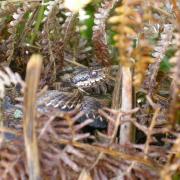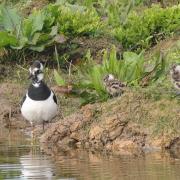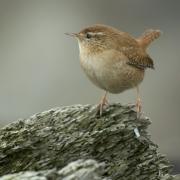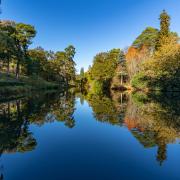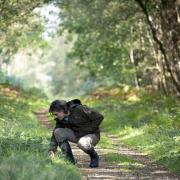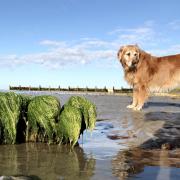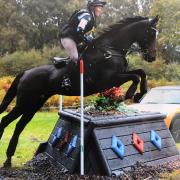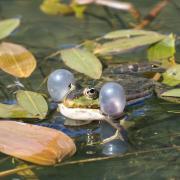Mike Russell says that eagle-eyed Albion supporters have more than the match to feast their eyes on these days...
One of the great advantages of being able to fly is that you get to watch great sporting events for free. This season at the Amex Stadium, home to Brighton and Hove Albion FC (also known as The Seagulls), a peregrine falcon has used its aerial prowess to get a real bird’s-eye view of The Seagulls’ home games, by regularly perching on the North Stand and observing the antics taking place on the pitch below. It remained totally unfazed recently by the raucous sound of 30,000 supporters when Brighton and Arsenal played out a thoroughly entertaining game in the FA Cup fourth round tie.
Peregrines are becoming a regular sight in our towns and cities and tall buildings are ideal for these birds as it gives them a high vantage point to observe what is going on around them. Stadiums often attract lots of feral pigeons seeking out the dark shelter high up in the roof, and this is what also attracts the peregrines as, in urban environments, pigeons make up a substantial proportion of their diet. The presence of a peregrine will really unsettle the pigeons so it is, in fact, doing the football club a great service by reducing the number of birds making a mess around the stadium. I’m sure it is also affecting the number of gulls as well, though that’s perhaps not such a good thing for a team nicknamed The Seagulls!
When Brighton used to play at the Goldstone Ground in Hove, I occasionally took my two young sons there and was surprised by how many different birds I saw over the years. Perhaps the most surprising was on one wet autumnal evening when Brighton was playing local rivals Portsmouth. At a crucial point when Portsmouth was attacking, a woodcock flew very low across the penalty area. Now, I think I was probably the only person in the crowd to notice. In common with most birdwatchers I am unable to prevent myself from shouting out the name of a bird when I see it and my offspring were highly embarassed. It is likely that the woodcock was a disorientated migrant from northern Europe having just arrived from over the Channel.
Another time, again at the Goldstone, I raised my eyes to the skies only to see a sparrowhawk gliding serenely over the stadium: again I shouted out, but at the very time the crowd had gone unusually quiet, so I attracted quite a few odd looks from fellow supporters. A barn owl also made an appearance many years ago, perched on one of the floodlights.
At other times I have seen hobbies and common terns over the old Wembley Stadium and I know there are other birdwatchers that combine their love of football and birds by keeping a stadiums list.
To have a peregrine falcon, the king of the skies, as a supporter really shows the calibre of the team, so perhaps I should suggest they change their name from The Seagulls to The Falcons!
***
Sussex Wildlife Trust - Woods Mill, Henfield, West Sussex; BN5 9SD, 01273 492630; www.sussexwildlifetrust.org.uk
WildCall (wildlife information service); 01273 494777
***
READ ON
• Brighton and Hove Albion’s Knight in shining armour - Dick Knight, the former chairman of Brighton and Hove Albion, rescued the football club against all the odds, taking it to the Championship and even securing a multi-million pound stadium at Falmer. But he has made plenty of enemies along the way, as Adam Trimingham reveals.
• Interview with Brighton and Hove Albion Chairman Tony Bloom - Brighton and Hove Albion is happily set up in the club’s new home, the American Express Community Stadium but, as chairman Tony Bloom tells Clive Agran, it has taken a long time and a lot of campaigning to get to where the Seagulls are now




